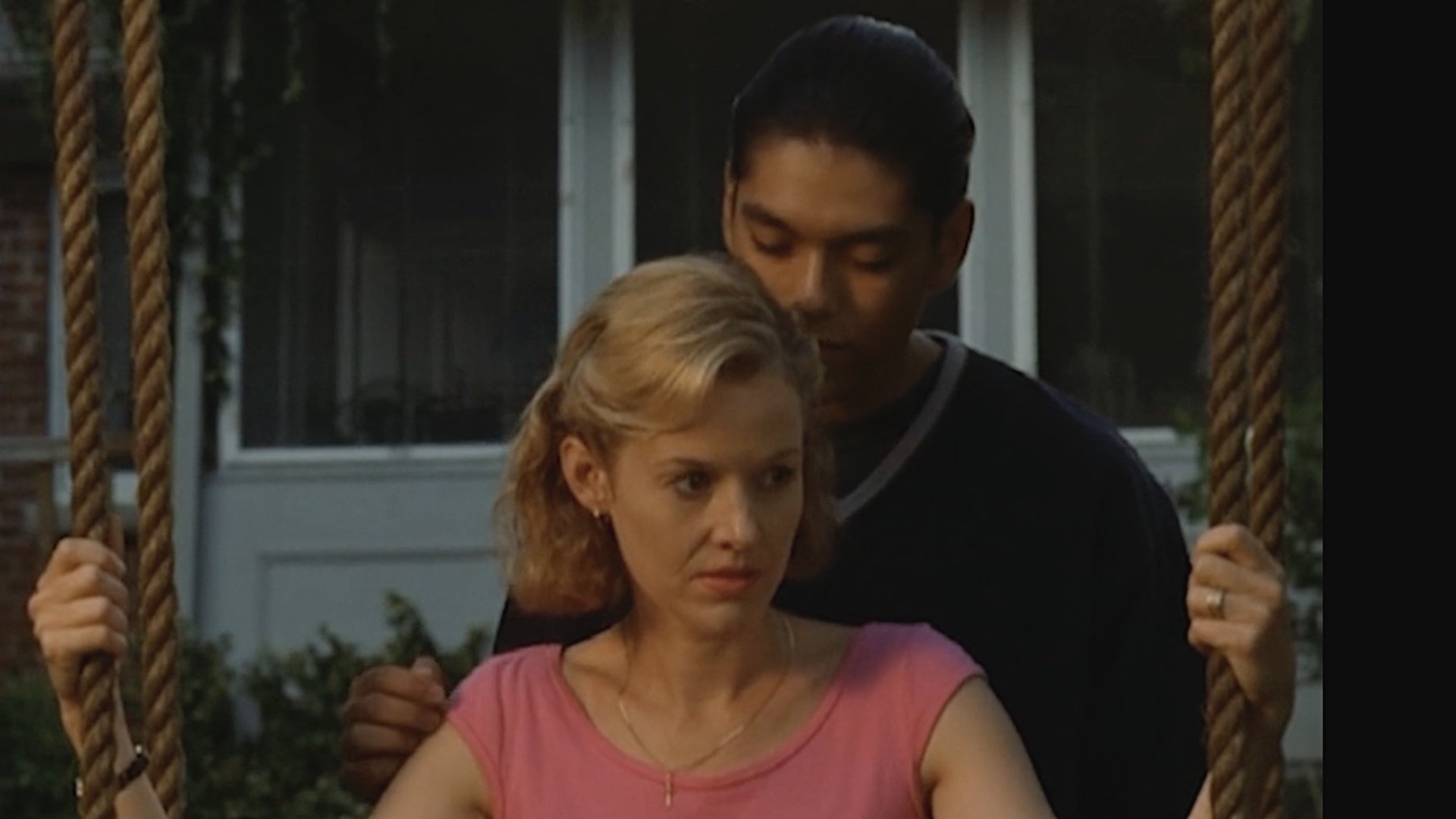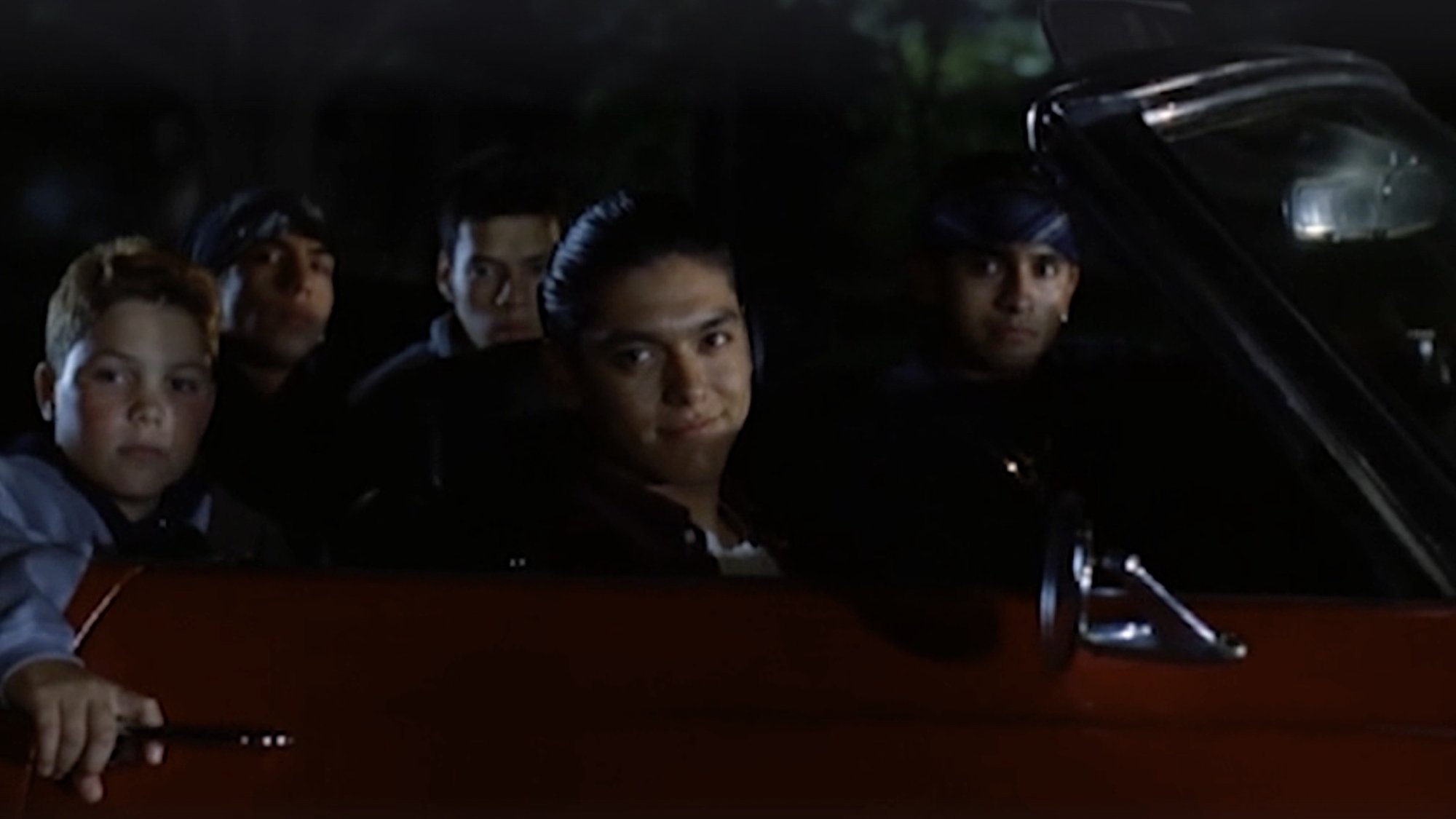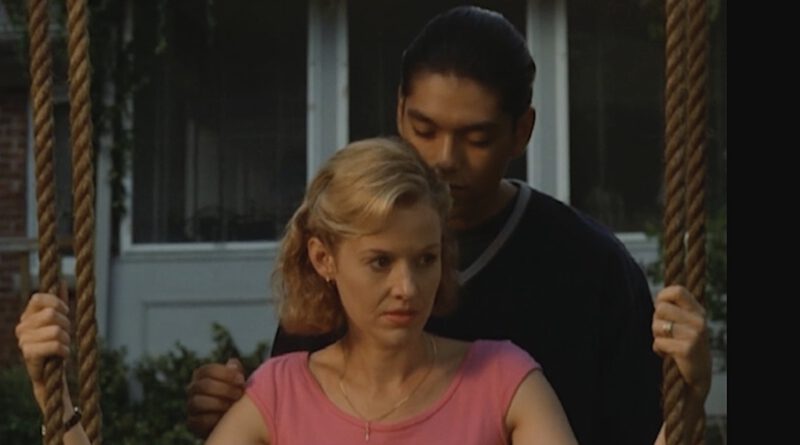‘May December’ versus ‘All-American Girl: The Mary Kay Letourneau Story’

Remember when there were three TV movies about Amy Fisher, all airing within a week of each other on major networks in 1993? It was one hell of a time to be alive, what with the tabloid papers, “investigative” series like Hard Copy, and deliciously cheesy televised dramas, all reveling in the notorious misfortune of others, from Monica Lewinsky to the Menendez brothers. And amid this craze for the unsavory situations of complete strangers came the made-for-TV movie All-American Girl: The Mary Kay Letourneau Story.
In 1997, Letourneau pled guilty to two counts of second-degree child rape; the schoolteacher was awaiting sentencing when she gave birth to her first (but not last) child with her former sixth-grade student Vili Fualaau. She broke the no-contact part of her plea deal and was sent back to jail in 1998, where she gave birth to a second child with Fualaau. She was released in 2004, and less than a year after her no-contact order was lifted, Letourneau and Fualaau got married. Although legally separated at the time, Fualaau was at Letourneau’s side when she died from cancer in 2020.
The inevitable TV movie made its way to the USA Network in the year 2000, directed by Lloyd Kramer. (Kramer, it must be noted, went on to direct the 2012 biopic Liz & Dick, which features Lindsay Lohan doing one of the laziest impersonations of Elizabeth Taylor ever captured.) Starring actress Penelope Ann Miller in the lead role, All-American Girl: The Mary Kay Letourneau Story is one of the seediest of the ripped-from-the-headlines TV movies America ever latched eyes on.
And with Todd Haynes’s similarly themed Oscar contender May December now on Netflix, All- American Girl is worth a look-see, as it’s exactly the sort of camp that Haynes contends his film is not. All-American Girl, an artifact from the ass-end of another age, is the real deal: pure, id-fueled excess.
All-American Girl is the Mary Kay Letourneau story amped up to eleven.

All-American Girl is tawdry basic cable at its most basic: overlit cinematography, a sultry Skinemax soundtrack, Lifetime-esque emotional histrionics. A modern-day retelling of this story centered on the statutory rape of a 13-year-old boy would hopefully exercise some restraint, but All-American Girl stomps blissfully into sleaze without a second thought.
Playing up the “Will they or won’t they?” angle, the film relishes teasing out its “forbidden romance,” ogling in icky detail every brush of skin with breathless anticipation. Indeed, by hiring an attractive 18-year-old actor (Omar Anguiano) to play the 13-year-old Fualaau, the movie dives headfirst into the exact swamp that Haynes would mercilessly satirize two decades later with May December. One of the funniest and darkest meta moments in Haynes’s movie focuses on the predicament of casting this particular role in the movie-within-the-movie — specifically, when headshots of 13-year-old actors are rejected by a blasé actress (played by Natalie Portman) because they’re not “sexy” enough to play the abused boy.
The most shocking element of All-American Girl is just how far it goes out of its way to take Letourneau’s side. The film is told from her perspective as she recounts the tale to a court-ordered psychologist (played by a deeply overqualified Mercedes Ruehl), and it never takes a moment to second-guess her version of events. The depiction of Fualaau not only makes him visibly older, but it also paints him as the predator. It’s like a weirdly unnerving gender-swapped take on another notorious ’90s figure, 17-year-old Amy Fisher, dubbed the “Long Island Lolita” by the media (who somehow missed en masse that Nabokov’s teen was not the villain of his novel).

Early on, Letourneau is depicted as a caring Christian mother, tucking her children into bed while singing “Jesus Loves You” to them. Meanwhile, across town, Fualaau is setting fire to an abandoned shack and then lying to the police about what happened. A later scene depicts Letourneau as unwitting prey when we see the 13-year-old — and his sneering gang of no-goodnik buds — pull up in a convertible front of Letourneau’s house, where he makes a giddy bet with them, declaring, “I’m gonna get that teacher.”
And yet, in the utterly shameless way of ’90s tabloid sensationalism and for all of its awfulness, All-American Girl is a hilarious watch if you can allow yourself to vibe on the Velveeta it’s serving. Since these characters never feel genuine for a moment, it’s easy to disassociate yourself from the real tragedy that set it off. The storytelling structure, with Ruehl’s psychiatrist enthusiastically pushing Letourneau to recount every sordid detail inside a moodily lit interrogation room, is straight out of an episode of Red Shoe Diaries — if Red Shoe Diaries had a very special hebephilia episode, that is. The script by Julie Hébert and the acting is, well, let’s be kind and say it’s overwrought. If you can’t find the humor in a badly lit scene of a furiously horny teenager screaming, “Recess is over!” at his bewildered teacher, then you’re probably not looking.
This scene is also a good litmus test as to whether or not you’ll find the humor in May December, which is built to be a wickedly funny and brutal rebuttal to everything that All-American Girl and its ilk stood for.
May December turns tabloid sleaze inside out.

May December has changed enough of the specifics from the Letourneau story so it’s not a strict retelling. This includes the names of the characters — Gracie (Julianne Moore) and Joe (Charles Melton) are our proxies here — as well as the initial context of their relationship (they met working in a pet store where she was his boss). But the team behind the film, including screenwriter Samy Burch, have been pretty forthcoming about where their inspiration came from.
May December isn’t interested in retreading the scandal, but instead focuses on an ambitious actress named Elizabeth (Natalie Portman), who dreams of making an All-American Girl of her own. She comes to Savannah to shadow Gracie before playing her in a movie that Elizabeth promises will be a more truthful and honest depiction of the affair. Haynes means to have his pineapple upside-down cake and eat it too, here. Not only is he satirizing the true-crime craze of the ’90s but also the glossier, ostensibly more highbrow offerings from the past decade, like American Crime Story, Candy, and Love and Death.
Haynes does this by having each of his female leads represent the “then” and the “now” of it — even the film’s title refers to this bifurcation of time. Gracie is the ’90s edition, selling her baby and wedding photos to tabloid television, all while shamelessly leaving a trail of destruction in her wake (including her first marriage and children). Like the tabloids that exploited their story and forgot it the second there was some other humiliation in their crosshairs, Gracie’s sociopathy is its own blank slate. Meanwhile, Elizabeth sweeps into town pretending to be above it all, but ultimately proves herself to be just as destructive and thoughtless by the film’s end. All in the pursuit of a juicy role, a good “story” – a word that, when applied to his situation, sends Melton’s Joe into a tailspin.
Todd Haynes searches for honesty amid artifice.

While these femme fatales face off in a darkly comic melodrama, Joe emerges as May December‘s beating and broken heart. Gracie and Elizabeth are off being obsessed with getting superficial appearances right (hair, make-up, lisp), while Joe is finally starting to see his tortured reality for what it is. When mid-argument he asks Gracie, “Why can’t we talk about it — if we’re really as in love as we say we are?” he cuts straight to their relationship’s bitter truth: how they’ve been forced to play-act perfection in order to make up for the original sin at the heart of it.
With this devastating emotional throughline slicing down May December‘s center, Haynes might be right in arguing that his film isn’t camp. But that doesn’t mean it doesn’t use the language of camp to deconstruct genuine objects of it. May December borrows technical cues from those tabloid retellings of the past – grainy, over-lit cinematography; a hyper-melodramatic score – and lays them time and again over the extremely banal. Family supper, baking a cake, and (in the movie’s most viral moment) checking the refrigerator for hot dogs. And it’s there, in the discord of ordinary life getting such soaring fabulism dolloped on top, that Haynes excavates his meaning.
Since camp exists in the chasm between intent and end product, May December argues that only objects as clueless as All-American Girl or today’s faux-prestige vehicles can truly be considered as such. And by making the disconnect between the banality of reality and the ways we reshape that to seem so overblown, Haynes puts our most base car-crash inclinations into stark, direct contrast against the existence of those folks who’ve gotten run over along the way.
In its end, May December circles around right back to All-American Girl.

After all of Elizabeth’s efforts, the movie she’s making is not some grand cinema about a morally gray character. Instead, May December’s final scene looks ripped straight out of All-American Girl.
We are drop-jawed witnesses to take after take of a reenactment of Elizabeth-as-Gracie’s pet-store seduction of Joe. The teen actor cast opposite Elizabeth is clearly older and attractive; the lisp that Gracie already manipulates like a weapon has become, in Elizabeth’s amateurish hands, even more exaggerated. And to top it off, Elizabeth-as-Gracie is doing the seducing while stroking a giant snake.
If this is what happens to a “true story” in Hollywood’s hands, we’re right to laugh at it, while the Joes of the world are right to want off the wheel altogether. The only person who ends the film with something like real growth is Joe, who’s last seen alone, watching his own teenagers graduate from a distance, having an emotional breakdown that seems to signal a profound (and pointedly unspoken) epiphany of some sort.
Our destructive cycles of voyeurism, embodied by Gracie and Elizabeth’s momentary diva showdown on the school’s football field that immediately follows, can’t reach him there. He seems to have uncovered an escape, something all his own, while their melodramatic merry-go-round spins off without him. Through Joe’s eyes, we can see the game for exactly what it is — prestige or trash, it’s got no room for truth.
How to watch: All-American Girl: The Mary Kay Letourneau Story is available to stream on Freevee and Tubi.


